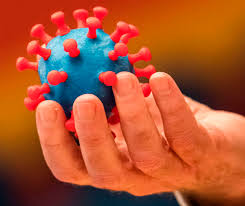The current situation in the Eastern Mediterranean Region remains alarming. This week, cases increased by 10% from last week, with the Kingdom of Saudi Arabia, Pakistan, Iran, and Iraq reporting almost 70% of all cases. Deaths in the Region also increased by 13%, with the occupied Palestinian territory, Syrian Arab Republic, and Libya reporting the largest relative increase in deaths.
In countries reporting increasing cases, limited data reporting is preventing us from fully understanding the situation. In countries facing emergencies, the situation may be underestimated due to under-reporting of the actual numbers. Even in countries where the situation seems to be stabilizing, we are seeing reductions in the number of people being tested, which affects the number of cases reported.
But we do have some good news: this week a total of one million people in the Region are reported as recovered from COVID-19 since the beginning of the pandemic. We are at a different stage of pandemic now as countries and communities know what needs to be done to control transmission.
However, with the new easing of lockdowns, some countries are facing challenges as they try to change the course of the outbreak. As public health measures are lifted, the vulnerability of people across the Region is now dramatically increasing.
The reopening of borders brings new risks of imported cases coming to countries that have successfully managed to contain transmission. Seroprevalence studies conducted in the Region show that only a very small portion of our population has been infected, leaving millions more at risk. This includes vulnerable populations such as displaced populations, who have not yet been significantly affected.
As countries open points of entry, surveillance and screening need to be strengthened. Regional and national preparedness and response plans must be adapted to the evolving situation. Data sharing by countries need to be improved, as there is a lot of information still missing that affects out ability to assess the real situation, monitor trends and revise recommendations and response accordingly.
Over time, populations will need to adapt to a new normal, in which COVID-19 will likely be present at low levels of transmission. Leaders need to be more transparent in what they want their populations to do, and our behaviors as individuals need to reflect this new normal in every single action we take.
There have been any questions about whether the virus is airborne, and WHO recently updated its guidance on this issue. COVID-19 mainly spreads via droplets through direct or close contact with infected people, or through indirect contact with contaminated objects or surfaces. To avoid contact with these droplets, it is important to stay at least 1 metre away from others, clean hands frequently, and cover the mouth with a tissue or bent elbow when sneezing or coughing. When physical distancing is not possible, wearing a fabric mask is an important measure to protect others.
Airborne transmission of the virus can occur in health care settings where specific medical procedures generate very small aerosols. Some reports also suggest the possibility of airborne transmission in indoor crowded spaces. However, based on what we currently know, transmission of COVID-19 primarily occurs from people when they have symptoms, and can also occur just before they develop symptoms, when they are in close proximity to others, especially for prolonged periods of time.
As the virus continues to rage across our Region, we must not become complacent. Even if the situation improves, we can expect a deterioration at any time, so we need to remain vigilant and cautious. The situation is not stable and may change overnight. There is also a possible seasonality of the disease, which means we may see more cases in September and October. Our main task now is to stop a bad situation from becoming catastrophic. For this we need all of the measures that WHO has been promoting all along: strong government leadership; early detection and testing; isolation and treatment of all cases; and tracing of all contacts. Our experience demonstrates that together, these measures work – and can turn around even the most severe of outbreaks.
